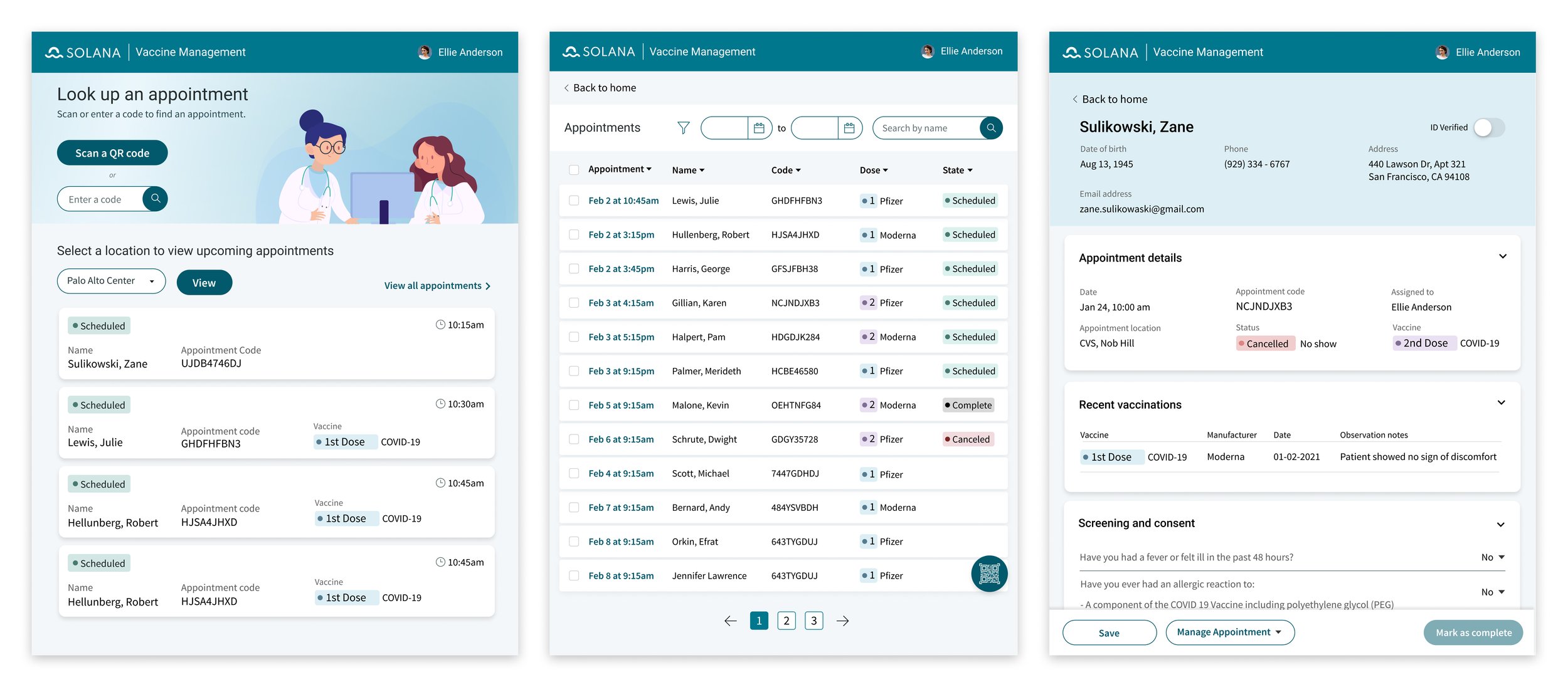Background
In 2020, the world was hit by one of the deadliest pandemics of our lifetime - COVID-19. It took almost a year to come up with vaccines to combat this disease. With the volume of vaccines that needed to be administered and ad hoc clinics that needed to open, the existing systems were not efficient to handle this problem.
Problem and goal
General vaccines are usually administered through legacy systems that have had years to perfect the solution. The average distribution of general vaccines is a lot lower than it is for the COVID-19 vaccine. EVERYONE needed the vaccine!
By the sheer volume of the population and the quick deadline to administer the vaccine, we had to come up with a solution in a matter of weeks with design, engineering, and testing happening simultaneously.
The vaccine distribution had just started and there wasn’t enough data to go synthesize. In addition, no two clinics run the same way. We had to quickly create a solution based that would apply to the majority to administer billions of doses with limited resources.
Solution
ServiceNow began by helping NHS Scotland with a vaccination platform built over our robust platform and Portal. Our engineering teams rapidly built this solution. We were successful to get 5.5 million people get vaccinated with our solution. This led us to think that if we can help Scotland, why can’t we help the entire world? That’s when it was decided to productise the vaccine solution and build a single product that can be used by many more organisations around the world — the vaccine administration management, or VAM in short.
Challenges
With huge demand for vaccinations across the globe, it was important to move fast and deliver the product quickly. It was decided that we will have 2 week releases! At the same time, we had to be cognizant of the fact that any health related product require utmost care with information and interactions. And for a project of this scale, we had to collaborate across functions to deliver a great experience.
So, we had to be fast, and we had to be accurate.
A two-week release cycle meant that we had to deliver designs within 3/4 days. And we had many hurdles on the way:
1. There was not adequate time for the understanding phase. We had to work diligently with PMs and solution consultations to understand the requirements and the roadmap clearly.
2. With limited time, there was not lot of scope for new components. We had to work closely with engineering to enhance the legacy components for our use case while ensuring a consume-grade experience.
3. There was a wide demographic spectrum. The content and interactions had to be precise, inclusive, and clear. While this holds true for any experience, the stakes were much higher in VAM.
Design process
Design principles








